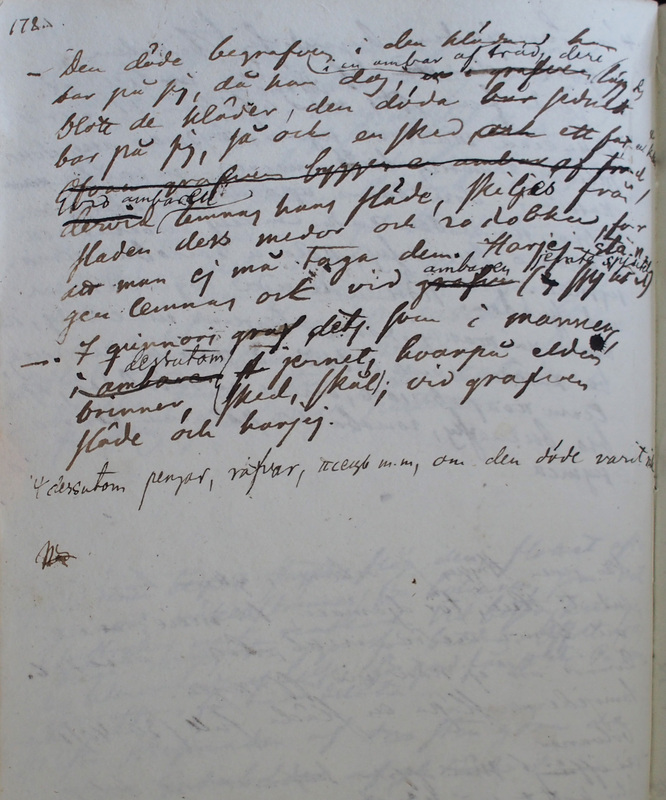Ethnographiska, historiska och statistiska anmärkningar. 172
Title
Ethnographiska, historiska och statistiska anmärkningar. 172
Description
|
Den döde
begrafves i den klädnad hanCastrén’s description of burial customs corresponds to other contemporary descriptions. The deceased are said to be buried in their own clothes in wooden coffins that only seldom get buried underground. The deceased is equipped with everyday utensils and a sledge, which are all broken during the ritual. Additionally, reindeer slaughtered near the burial place are given to the deceased. Consequently, their life is thought to continue in the hereafter. när (Lepehin 1805: 116–118, 257; Islavin 1847: 135–139; Schrenk 1848: 522-523; also Chomič 1966: 217–222; 1977: 24–28) See also [Hähe] and [den döda].
har på sig, då han dog i en ambar af träd, dere lägges, blott de kläder, den döda bär sednast bar på sig, så ock en sked, och ett fat. |
The deceased is buried in the clothing he was wearing when he died, in a shed made of boughs. Only the clothes the deceased last wore, and also a spoon and a dish, are laid in the shed. |
| Ofvan grafven bygges en ambar af tre, dervid Wid ambaren lemnas hans släde, skiljes från släden ders medor och головки för att man ej må taga dem. Harjej-stån- gen jemte spjutet lemnas ock vid grafven ambaren (spjutet) |
By the shed, one leaves his sledge, whose runners and golovki are taken away because they must not be taken by others. The harjej-pole, together with a spear, is also left at the shed. |
| I qvinnors graf dets[amma]. som i mannens i ambaren «dessutom pengar, räfvar, псець m.m., om den döde varit rik.» jernet, hvarpå elden brinner, (sked, skål); vid grafven släde och harjej. |
Women’s graves are similar to men’s. «also money, fox, Arctic fox pelts, etc., if the deceased was rich.»the iron plate upon which the fire burns (spoon, bowl); at the grave sledge and harjej. |

